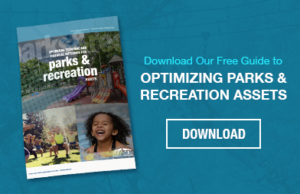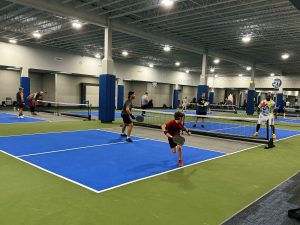It was once said that “failing to plan is planning to fail.” The saying applies to nearly every facet of life and business and is especially relevant when it comes to planning for the creation or enhancement of a parks and recreation asset. These projects often involve a number of stakeholders from various parts of your community. In order to coordinate the interests of your community, stakeholders, and all of the components involved in building a thriving facility, a plan must be in place.
At Sports Facilities Advisory and Sports Facilities Management, we’ve worked with over 2,000 communities in both the United States and internationally. We understand the critical nature of a good plan in bringing parks and recreation assets to life. Best practices indicate that your plan should include the following components:
Concept: Based on community member and stakeholder input and the feasibility of the project, a tangible concept can be crafted. It’s critical to ensure that all details of the concept are as clear and concise as possible, making it easier to implement. Additionally, it’s important to get buy-in from stakeholders as early as possible. This increases the chances of receiving the necessary resources for implementation.
Set Key Performance Indicators: In order to understand if a park and recreation asset is a success, benchmarks must be established that can illustrate its performance. Revenues generated, park visitation and program attendance are commonly used as key performance indicators (KPI), depending on the facility type. However, if you are building a sports facility, events held and event attendees are also important KPIs. If you’re hosting summer camps, summer camp registrations are important. Shelter reservations are a critical KPI if you have a traditional park. Whatever KPI is most important to your parks and recreation asset, be sure to identify it and clearly convey it to all stakeholders at the start of the project. It’s the scoreboard that will help you determine if you’ve achieved your goals and build the case for funding for more park assets in the future.
Site Selection: Unless you are enhancing an existing site, you’ll need to identify location options for your project. Project stakeholders can help guide this process and identify options. From a technical standpoint, it’s important to include landscape architects, land surveyors, civil engineers and others with experience in building and designing park and recreation assets to guide your team in the site selection process. Factors to consider when selecting a site for your park or recreation center asset include project concept, land availability, proximity to potential users, and the overall condition of potential sites.
Funding Plan: All projects, even small ones, require funding. The project stakeholders will play a major role in identifying funding partners. One of the tools available to them is a financial forecast. Financial forecasts, including the ProFormas created by the team at SFA, include a five year projection of revenues and of the economic impact a parks and recreation asset will have on the community. The analysis also includes construction and start-up costs. The financial forecast can be presented to potential funding partners to help them make informed decisions about the project.
Venue Planning: Once funding has been secured and a site has been determined, it’s time to form a team that will execute the work of bringing the park project to life. Project stakeholders and leads will need to request bids from architects, construction companies, and other contractors with experience on park construction projects. If the new park or recreational facility will house sports fields for competitive play, it will be important to work with contractors that understand the nuances of those types of projects. Sports leagues have specific rules for how their play surfaces are constructed in order to keep players safe and maintain a consistent, competitive landscape. Other considerations when building a parks and recreation facility may include your technological infrastructure and food and beverage configuration.
Project Timeline: As with any project, building a park or recreation center has multiple facets with many dependencies. A project timeline is vital to ensure that no piece of the project sits idle while another piece is being completed. Timelines are needed in order to complete a project on time, which will impact project budgets.
When building a project timeline, it’s important to start with your ultimate outcome (a new or enhanced parks and recreation asset) and a deadline for completion. Work backwards from there. Break the ultimate goal into milestones. Break those milestones into tasks. Those tasks can be assigned to appropriate parties based on skillset and availability. Once tasks have been assigned, map out how each task depends on each other for completion. For example, when building a home, drywall cannot be set until the wood frame has been built. Once these dependencies have been determined, assign time limits and deadlines for each task.
Marketing and Programming: Your new parks and recreation asset does not exist in a bubble. Even if you know what type of facility and programming your community wants, the new venue will compete with other venues with similar offerings. Don’t assume that you will beat privately-owned facilities on price. Certain brands, such as Lifetime Fitness, have a reputation for quality and great service, despite a higher price tag. Building the brand of your parks and recreation asset will be critical. Implement best practices for building your brand, including understanding what your potential customers want, appropriately aligning your messaging and programming, and utilizing tools such as media relations, social media, advertising, and events to convey your message.
In terms of programming, once you understand the needs of your community, it’s a matter of meeting those needs with the highest level of quality and service. Hiring a team who can help accomplish that is essential. Creativity is another component of standing out. For example, what can you do differently from the myriad of entities running summer camps? Is there an activity that’s not heavily offered in your community? Can you engage well-known experts to teach a class?
Planning for a parks and recreation asset that serves your community takes a great deal of coordination. The SFA & SFM team can be a powerful ally to you during this process through our expertise in every phase of facility development. From feasibility assessments to financial forecasting to construction to opening day, we are with you every step of the way. Contact us online or call us at (727) 474-3845.







